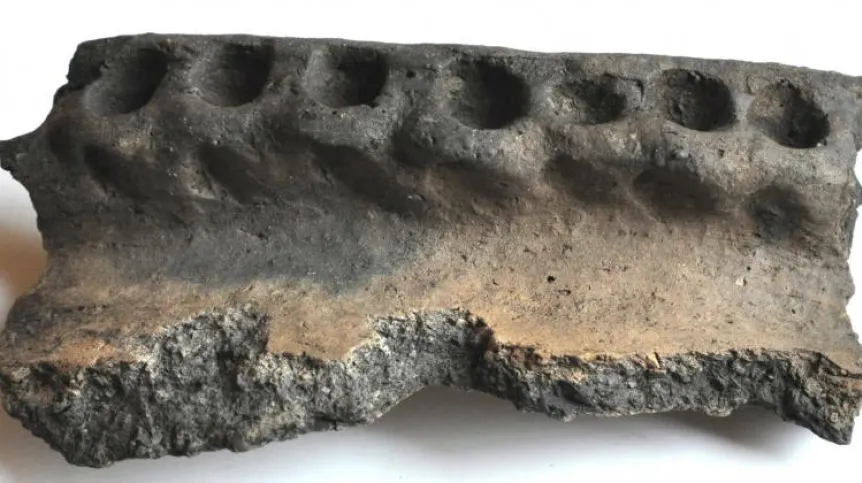
Some of the vessels used by hunters living 4,500 years ago in the vicinity of today`s Rzucewo (Pomerania) were used to prepare fish, seal and porpoise dishes, researchers determined by analysing the fats preserved in the vessel walls.
The remains of the prehistoric settlement of hunters located in Rzucewo on the Bay of Puck were discovered in the late 19th century. Now researchers of various specialisations are analysing the bones and artefacts discovered in the settlement during excavations carried out in recent decades by Danuta Król from the Archaeological Museum in Gdańsk.
For example, previous studies of animal remains show that although fish dominated in the prehistoric hunters` diet (there were also Greenland seals), bones of both wild and farmed terrestrial animals were found in the settlement.
Now scientists decided to analyse ceramic vessels for the presence of animal fats (lipids) to determine what kind of food was prepared in the settlement.
Danuta Król explains that lipids, i.e. fats preserved the walls of clay vessels, can provide a lot of information about the products processed in those vessels. Lipids are embedded in the walls of vessels mainly during cooking. These fats are poorly soluble in water, thanks to which they can be preserved for thousands of years, but not always.
In all fragments of ceramic vessels selected for analysis, fats from aquatic (marine) animals were detected. The analysed vessels included fragments of large storage vessels, vases with cord prints, thin-walled cups and bowls. In three of the examined vessels (vases and bowls), in addition to fat from aquatic animals, traces of plant products were also found.
"It is difficult to determine exactly what these vessels were for. Some were probably used to prepare meat and animal fat dishes," believes Król.
The presence of marine animal fats was also noted in characteristic trough-shaped vessels. Some scientists believe that they were lamps - filled with seal fat, in which wicks were placed. The results of the analysis support this hypothesis, Król suggests.
Interestingly, no milk fat was found in any of the analysed samples. This may be due to the fact that not all forms of vessels found in the settlement, e.g. cups, were tested.
"Analyses of fats from the walls of vessels confirm that hunters from Rzucewo who lived 4.5 thousand years ago ate fish and marine mammals to a large extent, including seals and porpoises. The bones of these animals were found inside their huts," the archaeologist concludes.
The first houses appeared on the Rzucewo Cape ca. 4500 BC. They were semi-dugouts, similar in shape to a circle or oval, with average dimensions slightly exceeding 3 by 3 meters. It was only around 2500 BC that coastal hunters started living in pole huts. Those were built on a rectangular plan and were larger than semi-dugouts. They were above ground structures.
The archaeological site in Rzucewo is currently located directly on the shores of the Bay of Puck. The former settlement was located on the edge of a moraine plateau, to which wetlands and peat bogs adjoined. At that time, the sea shore of the forming Puck Lagoon was several hundred meters from the settlement, and the water level was about 3-2 m lower than now.
Detailed research results will be published in an article by Lucy J. E. Cramp, Matylda Ruter and Łukasz Pospieszny from the University of Bristol, Volker Heyd from the University of Helsinki and Danuta Król from the Archaeological Museum in Gdańsk. It will appear in December in the XXVIII volume of Pomerania Antiqua.
PAP - Science in Poland, Szymon Zdziebłowski
szz/ ekr/ kap/
tr. RL













